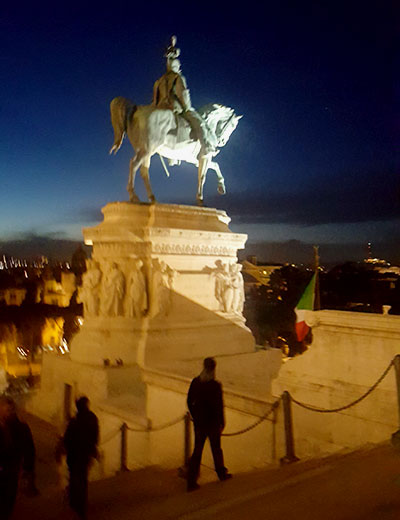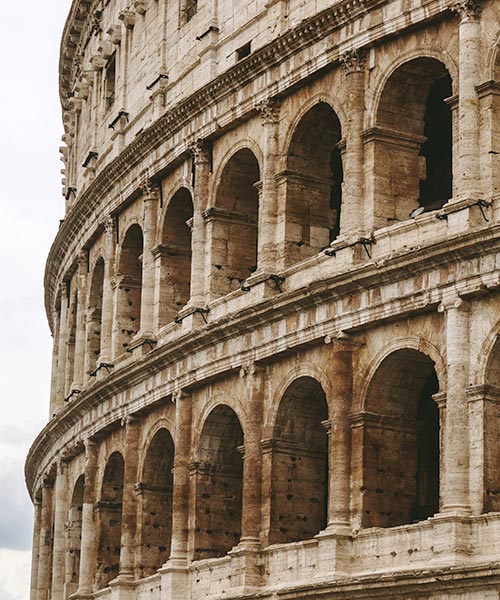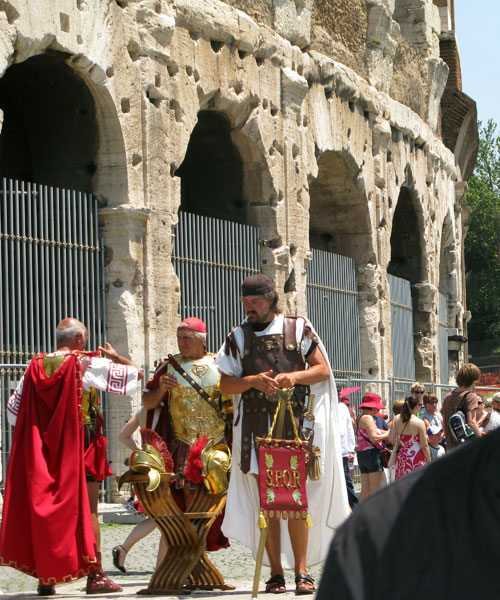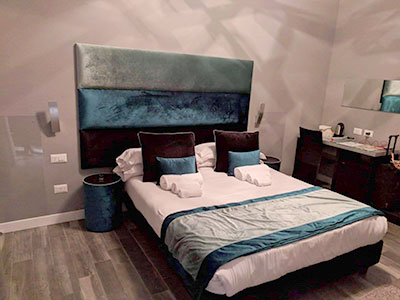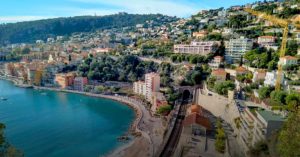Rome wasn’t built in a day, but we made it in two days!
It’s true, 48 hours is too short to see everything this city has to offer. But we decided that “when in Rome, do as the Romans do” – slowly and comfortably. It is impossible to exhaust Rome for all its thousands of years of history on one trip. So we decided on this brief visit to take things easy and fun.
In this post I will describe the experiences, impressions and recommendations for two days in Rome.
Two Days in Rome - The First Evening: Piazza Navona
We arrived in Rome from Florence (but that’s a topic for a post in itself) on Thursday afternoon. We arrived as a couple to one of the most magical cities in the world – in this case the children stayed at home.
Already in the first round of the city – on the crowded bus ride from the Termini station to the hotel, we were deeply impressed by the majesty and power that the huge buildings with the beautiful classical architecture radiated.
We got off in the city center near Piazza Navona and walked to the hotel dragging a heavy suitcase behind us.
It took us quite a while to find our hotel. A small Jewish-owned hotel located on the second floor of a pink building with a classic facade. The entire length of the large building has arched gates and store openings and there is no clear signage, so it is a bit difficult to locate the entrance gate to the hotel.
In the end we arrived, and after acclimatizing in the room and recovering a little from the journey, we remembered that we were hungry and went out to the Jewish ghetto to eat. There is a relatively large variety of kosher restaurants in Rome, most of them in the ghetto area in the city center.
Rome at Night
At night the streets of Rome were mysterious and magical. On the way we passed huge monuments, ancient squares and cafes full of people.
We arrived at the Jewish ghetto and were looking for a kosher place to eat. Finally we found a nice kosher restaurant in the heart of the ghetto.
After the meal we went back towards the hotel and arrived at “Piazza Navona” – one of the famous squares in the center of Rome, which is a stone’s throw from the hotel. The beautiful square was bright and lively despite the late hour, and was full of tourists and artists who presented entertaining street shows.
In the center of the square stands the “Fontana dei Quattro Fiumi” (Fountain of the Four Rivers) designed by the architect Bernini during the Renaissance. This spectacular work compares Rome to the center of the world from which the rivers flow, a kind of version of ‘all roads lead to Rome’. In the center of the fountain stands an impressive obelisk symbolizing power and victory.
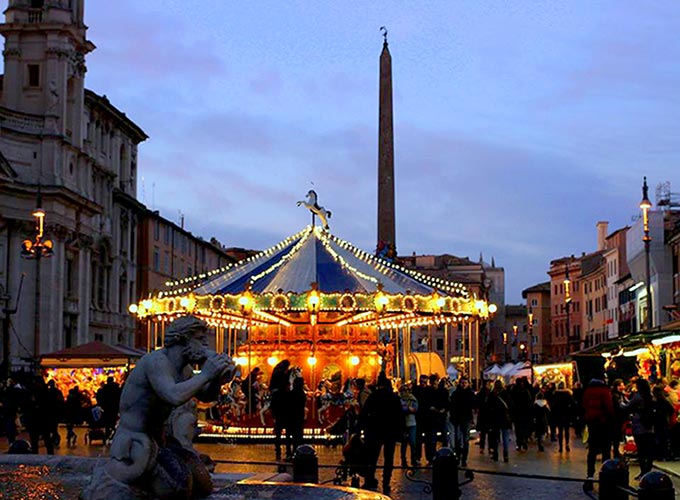
The fountain represents the four largest rivers in the world, symbolizing the four continents: the Danube – Europe, the Nile – Africa, the Ganges – Asia, and the Rio de la Plata – America. Each river is represented in the fountain by a different figure, sitting on a rock where the water bursts from the mouth of the fountain.
In addition, there are two more beautiful fountains in the square: the Fountain of the Moro (also by Bernini) and the Neptune fountain.
After we took a picture from every possible angle near the statues and fountains, we stopped to watch a street show performed by a small Iranian band. One of the dancers told the crowd: “I’m from Tehranian, but I’m not a terrorist!”
At about midnight we returned to the hotel. We opened the huge wooden gate decorated with a carved lion head and went up to the room to sleep.
Friday - Piazza Venezia, the Roman Forum and the Colosseum
The next morning a nice and kosher breakfast awaited us in the dining room. We ate and left in the direction of the Jewish ghetto – where we bought ready-made food, challah and various necessities for Shabbat. In the ghetto area there are several shops that offer kosher food, bakeries and restaurants.
After the shopping we walked along the Tiber River, which is crossed by ancient and famous bridges.

We returned to the hotel to put down the groceries we bought, and left again towards the old city.
Tip: An easy and recommended way to get to know Rome is a tour using a tourist bus, which allows you to get on and off alternately at the best sites in the city. The bus stops near the Vatican, the Colosseum, the Palatine Hill, the Trevi Fountain, Venice Square and more. Includes map, audio guide and free WiFi. Order tickets here >
We passed the beautiful Piazza Venezia, the central square of Rome named after the nearby Venetian Palace. The square is a central junction in the city, connecting Christian Rome with ancient Rome. It is interesting that the busy square has no traffic lights, so there is often a policeman standing there directing the traffic in white gloves.
During Mussolini’s reign, the square was used as a place for the people’s assemblies, and the dictator delivered his speeches to the nation from the palace balcony facing the square.

The most prominent element in Piazza Venezia is the Victor Emmanuel II Monument, which was built in memory of Vittorio Emanuele II – the first king who united Italy. It is a massive Victorian structure made of white marble, called by the Italians derisively “Wedding Cake” (the American soldiers who liberated the city at the end of World War II called it a “typewriter”) and also serves as a monument to commemorate the unknown soldier.
Don’t miss the spectacular view of the city from the monument’s balcony above! You can go up the stairs to the terrace and look out over all of ancient Rome. Those who are interested can take a transparent elevator up to the roof of the building above for a fee.
Also standing in the piazza is the Palace of Venice – Palazzo Venezia, a large Renaissance building from the 15th century. Today, the palace is used as a museum for works of art from the Middle Ages.
The Colosseum and the Roman Forum
We continued walking, and after about fifteen minutes we arrived at the Colosseum. The queue for the Colosseum is very long! But we were smart – we entered first the Roman Forum first, and bought a combined ticket for the Forum and the Colosseum (today more tourists have already picked up on this trick, and there is also a line in the Roman Forum. The best patent is to buy tickets in advance).
Tip: tickets for the Colosseum must be ordered in advance, preferably at least a week before the visit. This is the most popular site in Rome, the amount of visitors there is unimaginable and there will usually be huge queues.
Tickets for the Colosseum, the Roman Forum and the Palatine Hill:
A combined ticket for the Colosseum, the Roman Forum and the Palatine Hill + express entry to the Colosseum can be ordered here >
The ticket includes:
Express entry ticket to the Colosseum on the selected date
Entrance ticket to the Roman Forum and the Palatine Hill on the same day
Downloadable map of Rome in the imperial period
Instructions:
Proceed directly to the Colosseum Express Ticket Holder Counter to line up for mandatory security checks. This lane is marked with a “Ticket Holder and Roma Pass” sign.
קיץ 2023: הטבה לרוכשי כרטיסים לקולוסיאום באתר TIQETS דרך “מטיילים בכיפה”: 5% הנחה (קוד קופון MKIPA5) על כל הכרטיסים לקולוסיאום. לכרטיסים בהנחה לחצו כאן >
Ticket to the Colosseum, the Roman Forum and the Palatine Hill: Last minute tickets + Priority entrance + sightseeing bus tour can be ordered here >
The Roman Forum was a central site in ancient Rome. It spanned the area between the Capitoline Hill – the government, and the Palatine Hill – the seat of the Roman aristocracy. The forum served as a place for public assemblies, public legal debates, and gladiator fights during the days of the Roman Empire. In addition, the forum was used for religious ceremonies and the passage of victory processions.
The Forum complex includes the remains of many Roman temples, the famous Arch of Titus, the Arch of Septimius and the tall Column of Phocas.

As Jews, it was a special experience to walk the cobbled paths of the Roman Forum, and to feel that we were stepping on the ruins of the Roman Empire. We were especially excited about the Arch of Titus. We stood under it and saw the relief of the famous Menorah engraved in stone. The inscription is engraved on the gate: “Details from the Gate of Titus describing the plunder and booty from Jerusalem.”
From the forum we continued to the Colosseum. Actors dressed as gladiators and Roman emperors walked around the square of the Colosseum, offering to take pictures with them for a fee with Roman accessories and helmets.
Since we skipped the long line for tickets, we entered the Colosseum quite quickly. Inside we observed the cages with bars used to hold the lions and other animals of prey, we walked between the rows of stone seats, the tribunes and the ancient columns.
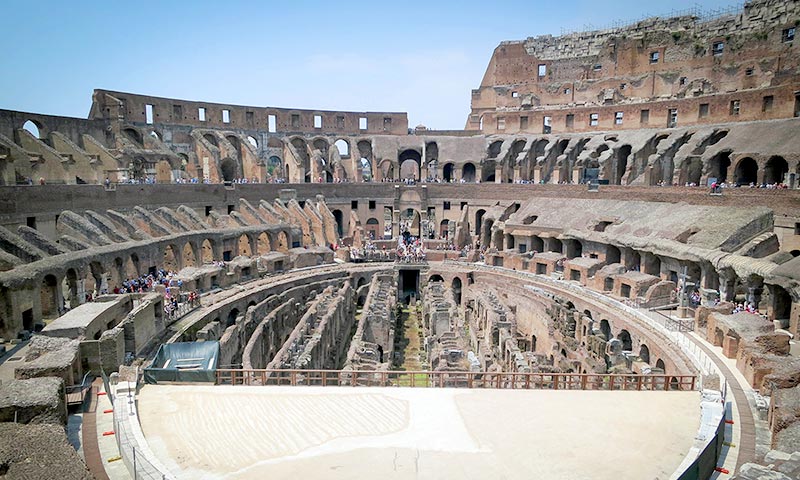
After about an hour and a half we left the Colosseum back to the hotel. We arranged the food we bought in the ghetto (the hotel provided the guests with Shabbat hotplate and samovar) and hurried to get ready for Shabbat.
Shabbat Night - the Great Synagogue of Rome
Shabbat came in, and we went to pray in the great synagogue of Rome, located on the bank of the Tiber river. The synagogue is impressive and beautiful, and is built in a neoclassical style with a square dome on top. Its dome is the only square dome in the city, to distinguish it from the other scattered churches in the city and to make it easier to identify the building.
In 1982, a terrorist incident took place in the synagogue, dozens were injured and a two-year-old boy was killed. Since then, the synagogue is secured by the Italian police. Entrance to the synagogue is after a security check carried out by the community’s security guards.
The interior of a synagogue is also very luxurious, and decorated with gold ornaments. The cantors are dressed very impressively. The prayer was a bit foreign to us, in the unique style of the Jews of Rome. But it was a charming and fascinating experience.
After the Shabbat night prayer we returned to the hotel.
We did not take a key with us, in order to avoid the prohibition of “Metaltel” on Shabbat, and we had to wait for someone to come downstairs and open the door for us.
We had a simple and lovely Shabbat meal in the dining room. Besides us, there were two other tourist couples from Israel in the dining room, and we exchanged experiences and impressions.
Shabbat in Rome - Pantheon and Trevi Fountain
On Saturday morning, my husband went to pray at the synagogue, and I stayed at the hotel to sleep. When he returned he said that the morning prayer was also experiential and special, there was a children’s choir that sang, and after the prayer an honorable Kiddush was held.
After a Shabbat meal and an afternoon rest, we went to the city for a walk. Due to the sanctity of Shabbat, we left empty-handed – without even a key! It was a lovely and refreshing experience to go out with nothing, not even a wallet and phone. We could focus on what we saw without constantly documenting, and squeeze in among the crowds of tourists without fear of pickpockets.
We went to the Pantheon. It is the oldest building in the city and one of the most important buildings in architectural history. The Pantheon is covered by a huge dome, and in the center there is a round skylight (oculus) open from which sunlight penetrates the structure. Due to the fact that the place is also used as a church (besides being a burial hall, where, among other things, the famous painter Raphael is buried) we did not go inside, and only looked at it from the outside.
The Pantheon square was cheerful and crowded with tourists and young people from all over the world. In the center of the square stands an ancient fountain.
From there we continued to the Trevi Fountain – the largest of the baroque fountains in Rome, and one of the most popular tourist sites. Crowds of tourists crowded the fountain area.

The fountain is also known as the “wishes Fountain”, after a traditional legend, according to which throwing a coin into the fountain guarantees the thrower’s return to Rome. Of course we didn’t toss a coin (Shabbat!)
At night, when more than three stars were already twinkling in the sky, we returned to the hotel to make “Havdalah”, and immediately after that to get ready for the flight back home.
Goodbye Rome! You were good to us, we’ll be back…
Best Hotels in Rome
In Rome, the location is the most important point when choosing your place to stay.
I recommend choosing a central place to stay, so you can experience Rome on foot. That’s what we did, and we enjoyed wandering the magical streets. It’s such a beautiful city to explore on foot, that’s just a waste to use public transportation.
1. HT6 Hotel Roma
an excellent boutique hotel in the center of Rome, next to the Great Synagogue and the Jewish Ghetto. Luxurious and pampering with a nice and courteous staff. Kosher products are also available at breakfast.
Suitable for Shabbat observers: The hotel staff is aware of the needs of Shabbat observers – provide a manual key to the room door, neutralize the electric front door during Shabbat, and even provide a corner for lighting candles. Close to kosher restaurants where Shabbat meals are served.
2. Lea Luxury Rooms
a recommended option for jewish observant in Rome: A beautiful new apartment hotel in the center of Rome, 100 meters from the Great Synagogue and near kosher shops and restaurants. A good and kosher breakfast. Prices are reasonable, and the staff speaks Hebrew!
Suitable for Shabbat observers: Shabbat keys, provide Shabbat hotplate and samovar on demand, arranging room lighting for Shabbat and more. Close to kosher restaurants where Shabbat meals are served.
4. Black And White Suite
A charming suites hotel in the center of the ghetto, with the possibility of a kosher breakfast.
Suitable for Shabbat observers: regular mechanical key, close to the synagogue and kosher restaurants, and even take care to bring the Jewish guests candles, cake and challah for Shabbat.
5. Arenula Suites
A Jewish-owned apartment hotel. 5 minutes walk from the Jewish ghetto and the synagogue. The rooms are clean and cozy, the hotel staff is welcoming and welcoming, a winning location – close to all the kosher sites and restaurants. Luxuriously decorated rooms, in-room espresso machine.
Shabbat: The keys in the hotel are regular (mechanical) and there are no sensors. It is recommended to book a room on a low floor.
6. Reginella Suites
An excellent hotel in the center of Rome, close to the Pantheon and Piazza Venezia, and very close to the Great Synagogue of Rome. Close to kosher restaurants. The place is modern and well-kept, service is especially courteous.
6. NEMAN Maison
An excellent Jewish-owned hotel in central Rome, near the Great Synagogue. Also suitable for families.
Perfect for kosher observers: Breakfast with kosher fur products, Israeli dairy products on request. Option for disposable utensils. Lighting the fire by a Jew.
Suitable for Shabbat observers: Shabbat keys, provide Shabbat hotplate and samovar on demand, arranging room lighting for Shabbat and more. Close to kosher restaurants where Shabbat meals are served.
7. Hotel Monte Cenci
A small and excellent boutique hotel (score 9.2 in the Booking!) Next to the Great Synagogue – 3 minutes walk, and close to kosher restaurants.
The hotel staff is extremely courteous and helpful, and is ready to help with any questions or requests. The hotel has no lobby but has a beautiful roof terrace.
Suitable for Shabbat observers: regular door key, staff aware of the needs of Shabbat observers.
The hotel is not kosher but a kosher breakfast can be ordered at the hotel.
8. Margana Tower
A new, clean and comfortable apartment hotel in central Rome. The apartments feature a kitchen equipped with an oven and hob and a seating area. Suitable for Sabbath-keepers: Regular key, 5 minutes walk from the Great Synagogue and the Jewish area.
9. Torre Argentina Relais
An excellent guest house in the center of Rome, close to most sites and a 6-minute walk from the Great Synagogue. Rooms are air conditioned and come with a minibar, safe and coffee maker. Close to kosher shops and restaurants.
For Shabbat observers: The hotel staff is aware of the needs of Shabbat observers and assists in opening the doors and everything possible.
10. Carmel Hotel
A simple hotel in a central location. Close to the ghetto and kosher restaurants. The staff speaks Hebrew. Kosher breakfast at extra charge. Suitable for Sabbath-keepers: Shabbat hotplate and samovar on Shabbat.
Tip: In this hotel it is recommended to select in advance in the booking process a room with an attached bath, because there are rooms in which the bathroom is shared throughout the floor
11. Key Rome Center
Modern and renovated B & B accommodation near the Spanish Steps. Owned by Jews.
Hotels around Piazza Bologna (Area with a Jewish community and a Chabad)
12. Bed Breakfast And Cappuccino
Kosher hotel close to synagogue and kosher restaurants. A wonderful team, especially the principal who helps and answers every problem and question. Includes kosher breakfast. Great rooms, a fun breakfast and a direction for all the places you would like to visit. The hotel is located just meters from the Metro.
בתי כנסת ברומא
- בית הכנסת הגדול – נמצא בגטו היהודי על גדת נהר הטיבר. כתובת: Lungotevere de’ Cenci.
- בית הכנסת האשכנזי – קרוב לתחנת הטרמיני. נוסח ספרדי – האר”י. כתובת: Via Cesare Balbo, 33.
- בית הכנסת בית אל – באזור פיאצה בולוניה. נוסח עדות המזרח. כתובת: Via Padova, 92.
- בית הכנסת בית שמואל – באזור פיאצה בולוניה. נוסח עדות המזרח. כתובת: Via Garfagnana, 4/a.
Do you have another recommendation for two days in Rome?
I would be very happy if you share in the comments!


